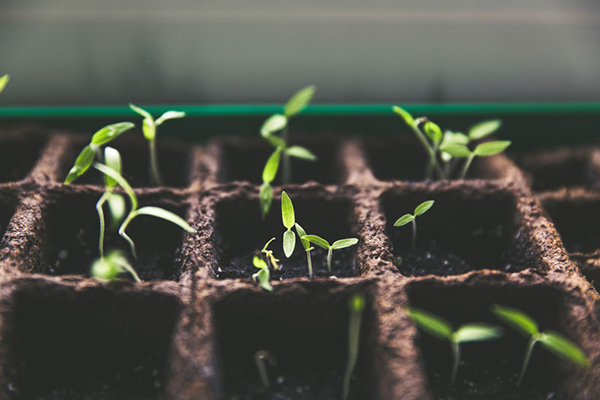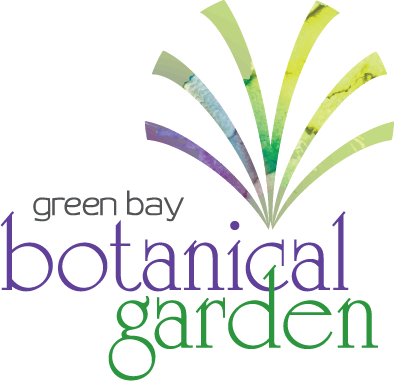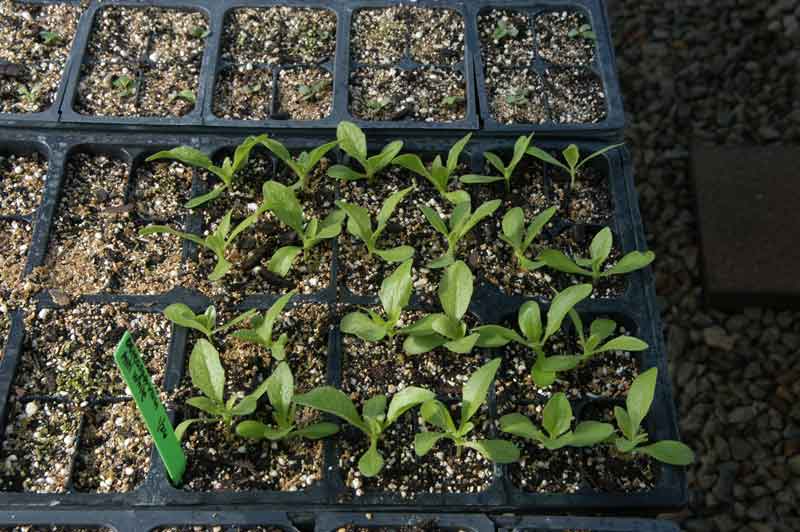Another year has come and gone, and we’re back to seed starting season! We’re already hard at work in our greenhouses starting some early pansies and canna lilies since they need more time to germinate than other flower and food plant varieties, but we’re excited to begin some of our other annuals early next month.
Although the thought of starting your own veggies and other plants from seed for the first time may give you some anxiety, it’s not as hard as you may think. All you need are a few basic ingredients and you’ll have sprouting plants in no time!

While most vegetable plants are readily available at your local nursery or greenhouse in the early spring months, they typically carry a limited selection of varieties. By purchasing your own seeds, you have control over which varieties you grow. Not only can you extend the season of cool season crops, but you can also get a head start on growing warm season crops.
We recommend ordering your seeds sooner than later, especially with how things went last year at this time. Last year, many people were new to the gardening scene because of quarantine and stay-at-home situations due to the start of the pandemic. This caused an influx of people who needed seeds and many garden center and nurseries were overwhelmed with orders. These centers and nurseries are more prepared this growing season and we’re ecstatic that these newer gardeners have now grown major green thumbs since then!
Here are five items you needs to start your seeds:
Growing Medium
Use a soilless media, a potting mix that doesn’t include soil, but has a variety of organic and inorganic materials, as it’s the best option for growing in containers. Plants grown in soilless mixes are also less likely to be bothered by pests or be affected by soil-borne diseases. At the Garden, we use a product called Fafard® 3B mixed with a slow-release fertilizer, Osmocote®.
Container
Get pre-made growing kits or reuse containers (old flowerpots, sour cream containers, paper cups, egg cartons, etc.). Make sure they are clean (sterilize with a 10% bleach solution) and have drainage holes.
Light
For optimal light, a sunroom or south-facing window is your best bet. Seedlings need 6-8 hours of direct sunlight or 12-15 hours of supplemental lighting (ex: an overhead shop light). Not enough light leads to tall, leggy plants that won’t do well when you finally plant them outside in your garden.


Warmth
Starting seeds means you also need some amount of heat to germinate them. Use heat mats, a warm windowsill or the top of the fridge.
Water
A no-brainer, but water helps seedlings germinate (sprout) and grow.
HOW SHOULD I PLANT MY SEEDS?
- Fill your container with moistened soilless media.
- Plant the seeds according to the directions on the packet they came in. Most seeds like to be planted 1-2 times as deep as they are wide and small seeds should be covered with a dusting of fine grade vermiculite. Don’t forget to label which plant is growing in which container with craft sticks or small plastic label stakes.
- Water your seeds with a fine mist and keep the soilless media evenly moist until they germinate. Cover the container with a clear plastic lid or plastic wrap to keep the growing environment humid. Once seedlings have popped up, remove the cover. Remember to place your planted containers on a warm growing surface at the start. Once seedlings have emerged, remove them from heat and move into a cooler room. The cooler room should have at least 6-8 hours of direct or 12-15 hours of supplemental light per day.
WHEN SHOULD I START MY SEEDS?
It depends on what you’re hoping to grow. There are so many vegetables, both cool and warm season, and hardiness zones. Use a calendar like the one found on the Old Farmer’s Almanac website and search by zip code to find accurate start dates for your region.
Cool Season Vegetables
Based on our USDA Hardiness zone of 5a, most cool season veggies such as lettuce, cabbage, kale or onions can be started indoors in March. Peas, carrots, radish, beets, lettuce or spinach can be directly sown outdoors in late April to early May while the soil is still cool.


Warm Season Vegetables
Most warm season veggies like peppers, tomatoes, cucumbers, herbs, squash or pumpkins can be started indoors in April. Corn, zucchini, cucumbers, squash and pumpkins can be directly sown outdoors in late May to early June, once the soil is warm.
Warm season veggies won’t grow in cool soil and require a longer growing season to set fruit. For example, if we waited until the soil warms in late May to early June to plant tomato seeds outside at the Garden, we may get fruit to set by the end of the season but would likely have a killing frost before the fruit actually ripens. So, we start our tomato seeds early indoors to give the plants the best chance to set fruit that will ripen and be ready for harvest by the end of the season.
It’s never too early to start planning your garden for the next year! Make a list of all your favorite recipes, grow all your ingredients right at home and share with your neighbors or local food pantry.
If you’re having trouble with your seeds not germinating properly, makes sure you’re aware of some common mistakes to avoid from the Creative Vegetable Gardener.
New to seed starting entirely? Sign up for our upcoming virtual Seed Starting 101 class on Friday, March 26 from 6-7 pm for an easy, yet informative workshop on starting your own seeds at home!
For more information on seed starting, check out our how-to video below from last spring when most people were stuck at home during the first round of quarantine for the start of COVID-19 pandemic.
This blog post was originally published in 2019 and has been updated for 2021.







